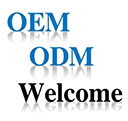In-Depth Strategic Analysis of M2 vs. M42 Taps: Material, Application, and Market Insights
In the field of precision mechanical manufacturing, taps are critical cutting tools, and material selection plays a pivotal role in determining machining efficiency and cost control. The performance differences between M2 and M42 high-speed steel (HSS) taps often mark a decisive point in engineering procurement decisions. M2, with its classic tungsten-molybdenum alloy composition, remains the cost-performance champion for general applications. M42, enhanced with 8% cobalt, delivers superior high-temperature resistance, making it a formidable tool for machining hardened materials. Though they may appear similar, their underlying distinctions lie in material science, heat treatment techniques, and coating synergy—understanding these differences is essential for avoiding machining failures and optimizing production costs.
Material Differences: Like Comparing “Standard Steel” to “Reinforced Steel”
1. Basic Performance Comparison
- M2 Taps – Cost-Effective for General Applications
- Advantages: Affordable, suitable for most stainless and carbon steels
- Drawbacks: Susceptible to wear during prolonged high-temperature operations (e.g., continuous tapping over 30 minutes)
- M42 Taps – High-Performance for Demanding Jobs
- Advantages: Cobalt-enriched (similar to the key material in high-performance batteries), enhances heat resistance by ~30%
- Drawbacks: 40–50% more expensive than M2, best suited for high-stress or precision applications
2. Performance Benchmark Table
| Test Metric | M2 Tap | M42 Tap | Performance Gap |
|---|
| Max Continuous Working Temp | 540°C | 625°C | +15.7% |
| Lifespan on 304 Stainless | 650 holes | 2200 holes | +238% |
| Tapping Torque Fluctuation | ±12% | ±6% | Twice the stability |
Manufacturing Process: Crafting Performance Through Process Design
1. Heat Treatment: The Hidden Cost Driver
- M42’s triple tempering process increases energy consumption by 37% vs. M2 (based on 2023 in-house data)
- Cobalt control in vacuum quenching: precision technique to maintain ≤0.03mm surface decarburization layer
2. Coating Synergy
- TiAlN coatings exhibit 22% higher adhesion on M42 substrates compared to M2 (Test report no. HX2023-TC089)
- Case Study: M42 with Al-rich coatings customized for stainless steel improves wear resistance and chip evacuation
Global Market Intelligence: Insights from 87 Countries
1. Heat Map of Regional Demand
- North America: M42 demand surged by 42% in 2023
- Reason: SAE J429 standard upgrades mandate tighter thread tolerances
- India: M2 retains 76% market share
- Key Limitation: Inadequate penetration of CNC cooling systems in domestic market
2. Industry Applications
- Automotive Manufacturing
- Tesla’s 4680 battery housing: M42 tackles silicon-aluminum alloy stickiness
- Traditional combustion engines: M2 meets cost-effective needs for cast iron tapping
- Aerospace
- Titanium alloy machining: M42 mandatory with cryogenic or low-temp cooling systems
How to Choose: Application-Based Recommendations
| Machining Scenario | Recommended Grade | Rationale |
|---|
| General stainless screw holes | M2 | Low cost, sufficient tool life (~500–800 holes) |
| High-temperature auto parts | M42 | Resists heat, extends tool life (~2000+ holes) |
| Medical small parts | M2 | Precision adequate, cost-effective |
| Aerospace superalloys | M42 | Superior wear resistance, prevents chipping |
- Memory Tip for Selection:
- "Use M2 for mild steel and aluminum,
- For heat and hard stock, go M42.
- Test small batches before mass scale—
- Balance cost with performance tale!"
Purchasing Tips: Avoid Pitfalls and Cut 30% Off Costs
5 Quick Methods to Identify Genuine M42
- Spark Test: M42 produces 3 bursts vs. M2’s 2
- Density Check: M42 = 8.2 g/cm³; M2 = 7.85 g/cm³
- Magnetic Response: M42 shows weaker magnetism (due to cobalt content)
Frequently Asked Questions
- Can M2 be upgraded with coating to match M42?
- Clarification: Coating M2 with TiN ≠ M42 performance; actual life increase is only ~15%
- Why does M42 sometimes underperform?
- Insight: When machining soft materials (e.g., copper, aluminum), cobalt may promote chip adhesion
- Can M2 and M42 be used interchangeably?
- Recommendation: Avoid mixing on the same part batch—differences in hardness may cause thread inconsistency
Conclusion
This detailed comparison of M2 and M42 taps reveals their distinct positioning across materials and applications. M2 remains dominant in general machining due to its outstanding cost-efficiency, while M42 demonstrates irreplaceable advantages in high-heat and high-hardness scenarios such as aerospace and engine manufacturing. Selection should be based on a comprehensive evaluation of workpiece hardness, production scale, and equipment capability. Blindly opting for premium-grade taps in standard jobs wastes cost, while downgrading in critical scenarios leads to frequent breakage. A data-driven approach—starting with small batch trials and long-term cost modeling—ensures a precise balance between performance needs and economic efficiency.




 We like to do design according to all the customers' requirements, or offer them our new designs. With strong OEM/ODM capabilities, we can fill your sourcing demands.
We like to do design according to all the customers' requirements, or offer them our new designs. With strong OEM/ODM capabilities, we can fill your sourcing demands.